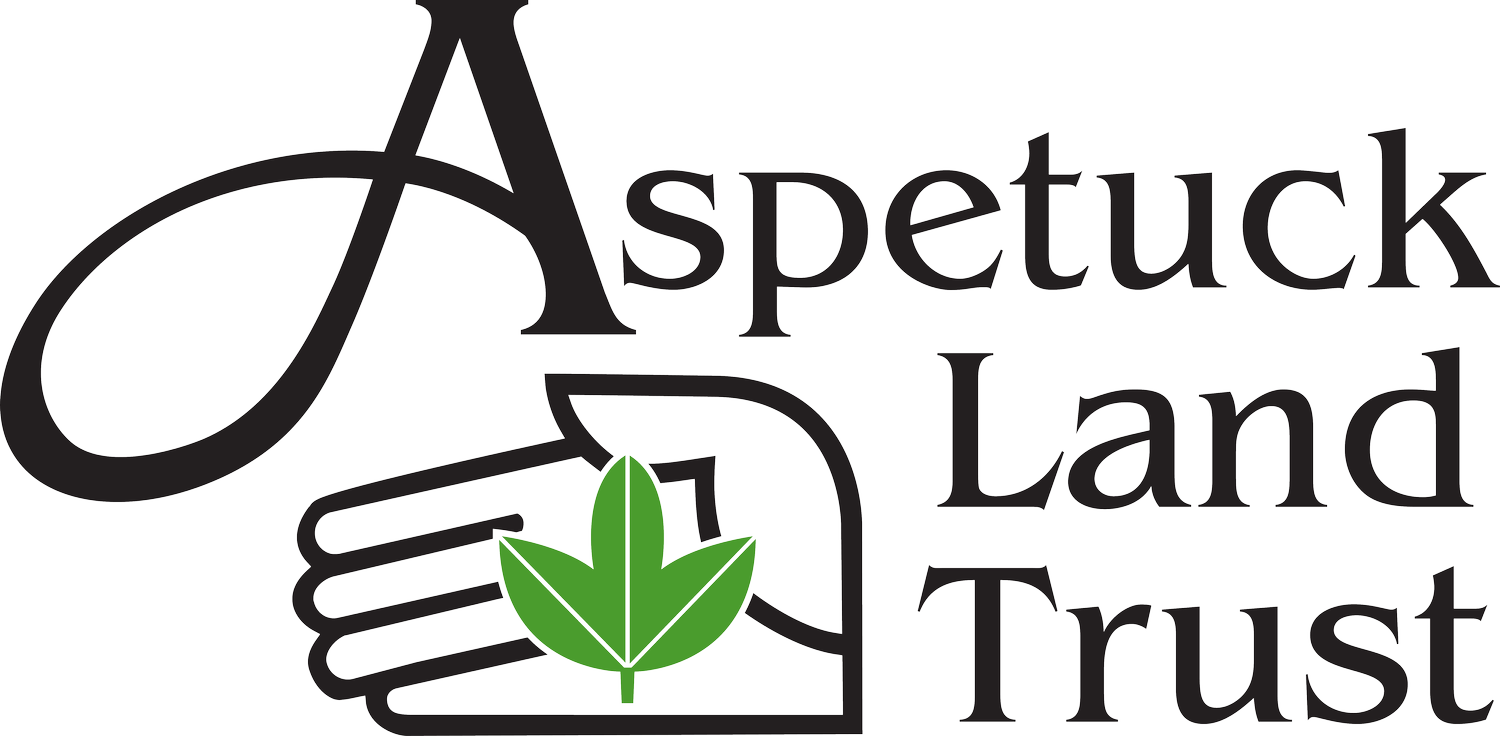
5. Purple Coneflower
Echinacea purpurea | A garden favorite in Aspetuck’s spring plant sales, Echinacea attracts butterflies and hummingbirds with its showy purple petals and ample nectar in the summer. But if you leave it standing in the winter, it becomes a source of seeds — aka nutrition — for overwintering birds.
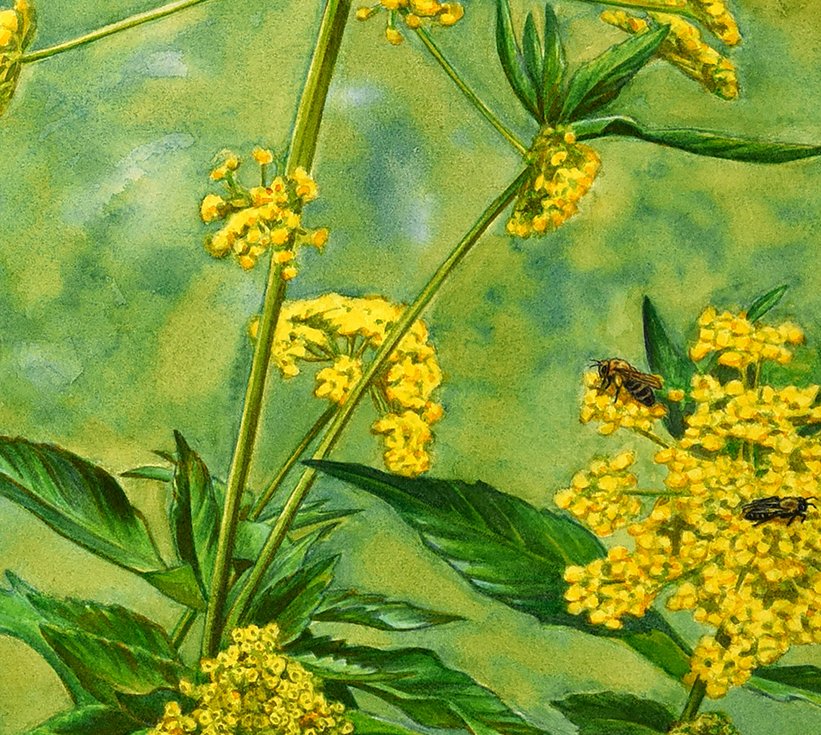
7. Golden Alexander
Zizia aurea | This is a plant that supports many kind of pollinators: small beneficial wasps, flies, native bees, and of course the black swallowtail butterfly. Andrena ziziae is just one native bee species that visits in early spring when other nectar sources can be scarce.
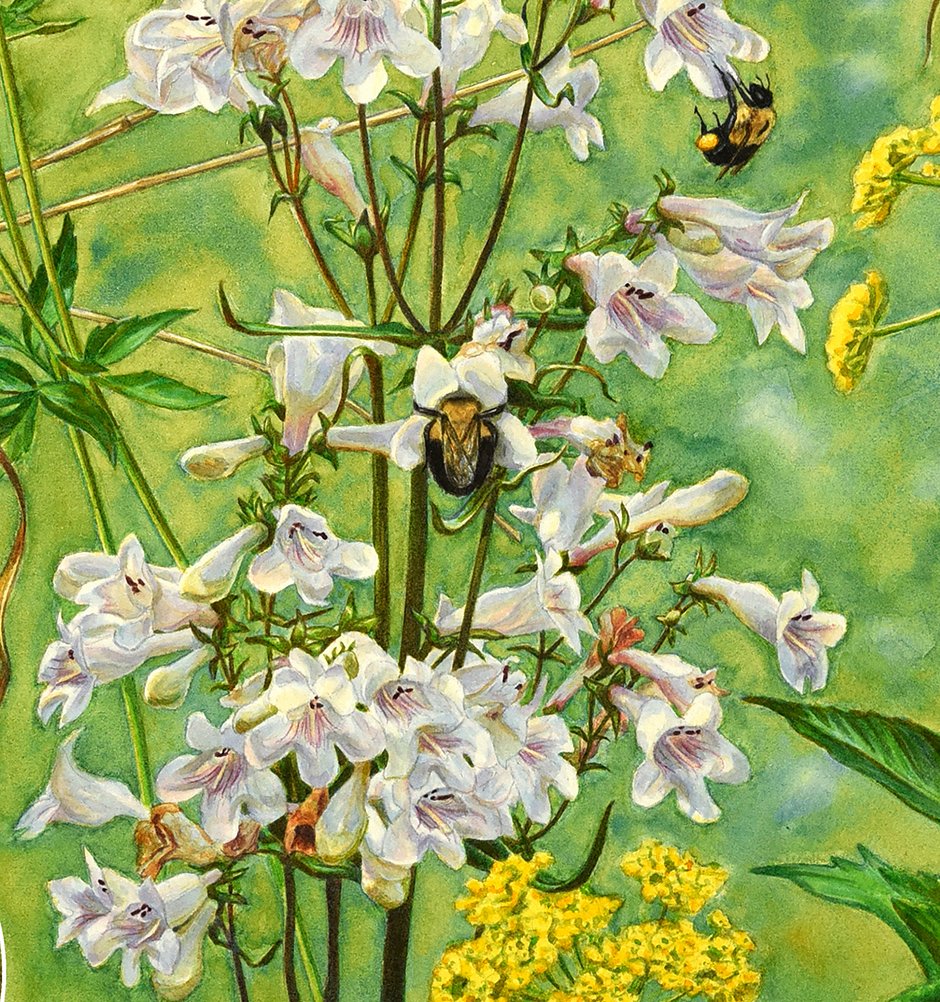
8. Foxglove beardtongue
Penstemon digitalis | The flower reminds us of a “beard” because of the hairs that push visiting bees deeper into the “tongue” of the flower. Also notice the pink lines to guide pollinators.

9. Purple Coneflower Leaves
Echinacea purpurea | Purple coneflower doubles as a host plant for the silvery checkerspot butterfly and a source of seeds for birds like the Baltimore oriole. We often forget there are so many important roles of plants besides nectar.
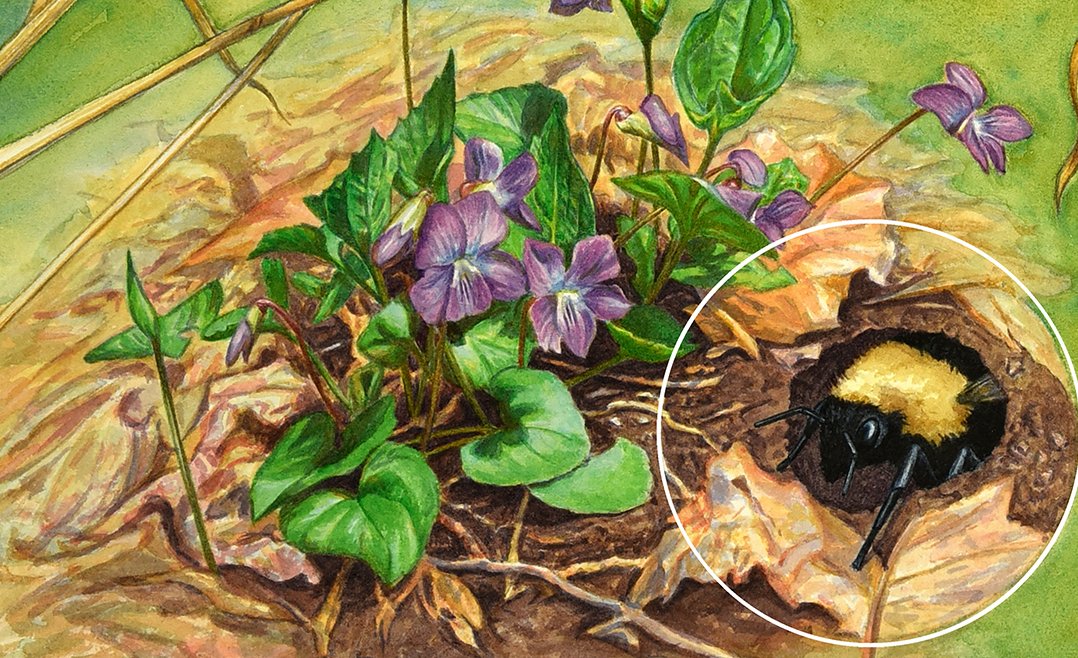
10. Common blue violet
Viola sororia | Violets thrive in early spring, under moist conditions. But don’t overlook these small plants as just groundcover or even mislabelled weeds: they support a specialist mining bee, Adrena violae.
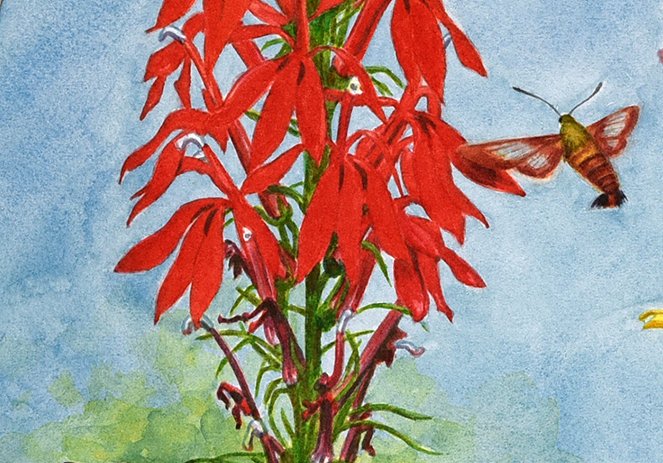
16. Cardinal flower
Lobelia cardinalis | The cardinal flower is an example of coevolution, as a flower and pollinator formed a relationship over time that benefitted them both: hummingbirds and clearwing moths are able to access the long, slender red tubules for nectar, and in turn, the cardinal flower is pollinated!
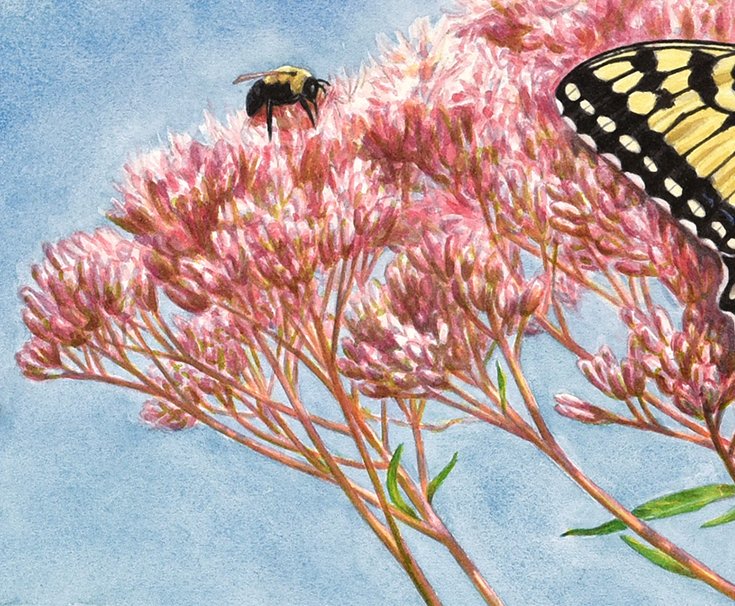
17. Spotted Joe Pye weed
Eutrochium maculatum | Named for the visible spots on the stem, spotted Joe Pye weed offers high-value nectar and pollen for bumble bees and the Monarch butterfly in late season.
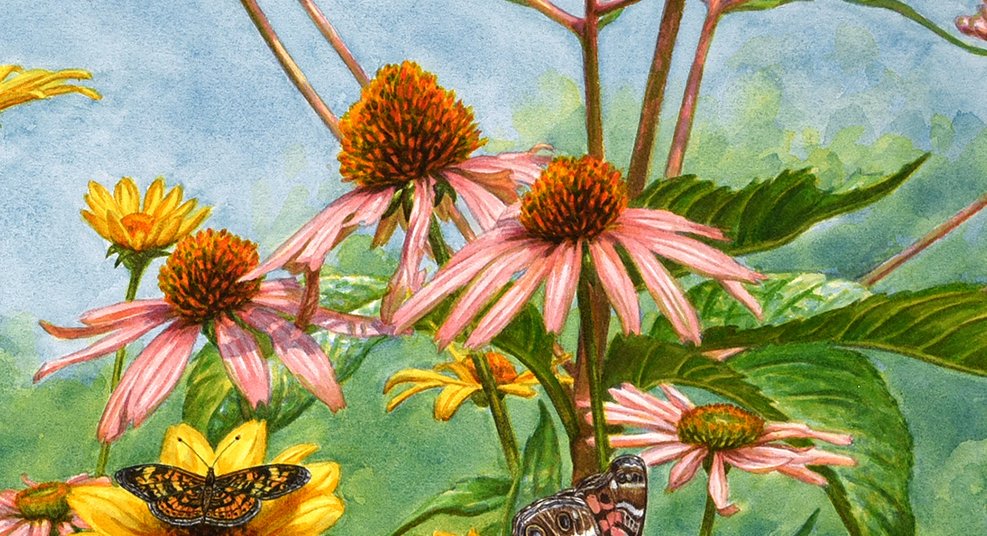
18. Purple coneflower
Echinacea purpurea | While we’ve mentioned many plants that prefer wet and swampy soil, Echinacea is the choice for sunny and dry areas. It blooms for long stretches in meadows, prairies, and garden borders.

19. False sunflower
Heliopsis helianthoides | A sunflower-like plant, Heliopsis is long-blooming from June to September. It’s also easy to plant from seed.

20. Golden Alexander
Zizia aurea | Zizia is a host plant for the black swallowtail. In addition to spotting a caterpillar on its leaves, you might notice that it has interestingly textured leaves divided into groups of 3’s.
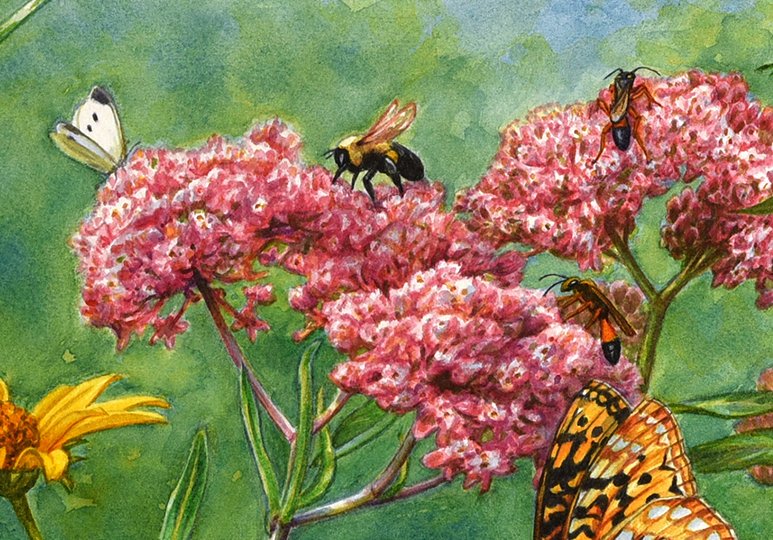
21. Swamp milkweed
Asclepias incarnata | Swamp milkweed is perfect for creating Monarch habitat in wet or swampy areas. As Monarch caterpillars eat milkweed leaves, they ingest the plant’s cardiac glycosides, which they can tolerate but their predators cannot. Perhaps that’s why swamp milkweed is highly deer resistant!











